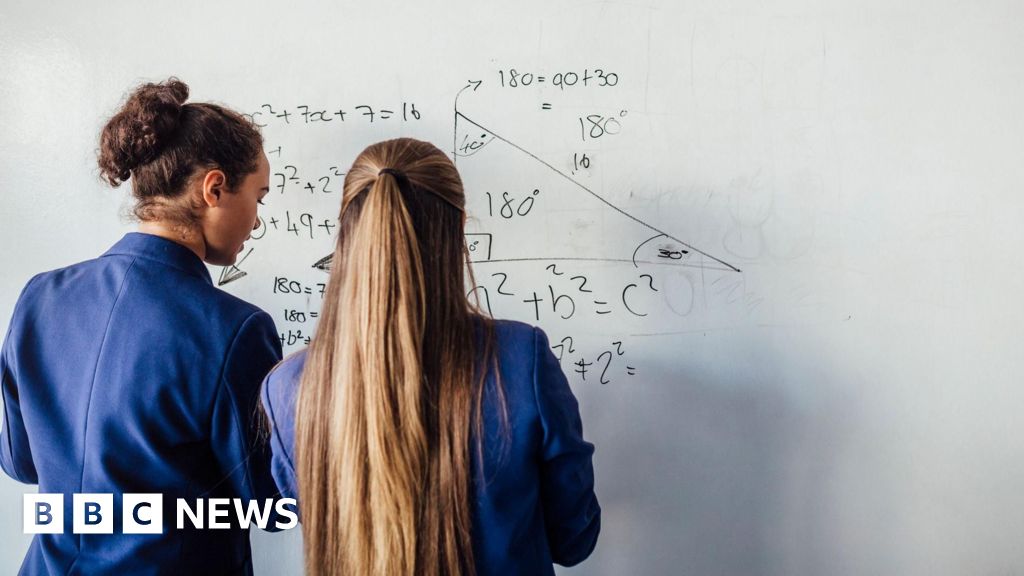 Getty Images
Getty ImagesThe Labour government has confirmed it will act on its manifesto commitment to change the way private school fees are taxed.
The King’s Speech included plans to remove the current exemption from value added tax (VAT), which the government says will fund 6,500 new teachers in England.
What are private schools and how many are there?
Private schools, sometimes called independent schools, charge fees to most of their students.
While some famous schools like Eton and Harrow charge about £50,000 a year, the average across the UK is about £15,000.
There are about 2,500 private schools in the UK, educating about 7% of all pupils, including about 570,000 in England.
Private schools have more freedom than government-funded state schools, so do not have to follow the national curriculum, for example.
Some local authorities pay for children with special educational needs and disabilities to attend private schools.
What is VAT and how does it apply to private schools?
Value added tax, or VAT, is the tax you have to pay when you buy many goods or services in the UK. The standard rate is 20%.
At the moment, private schools do not have to charge VAT on their fees because of a legal exemption for organisations providing education.
About half of England’s private schools are also charities, so receive an 80% reduction on business rates (taxes on properties used for commercial purposes).
How will the government change the way fees are taxed?
The Labour manifesto pledged to end private schools’ VAT exemption and business rate relief, rather than to remove their charitable status.
The King’s Speech confirmed that measures will be brought forward to remove the VAT exemption. It said this would fund 6,500 new teachers in England.
The Institute for Fiscal Studies (IFS) think tank previously calculated that the policy would raise about £1.6bn per year.
It said this would generate an extra £1.3-1.5bn, after taking into account the estimated cost of accommodating children who might switch from private to state education as a result of the changes.
That could allow a 2% increase in state school spending in England.
The removal of the VAT exemption would be UK-wide, but education is devolved, so each nation’s government would decide how to spend the additional money.
Before the general election, Prime Minister Sir Keir Starmer also confirmed that children with legally-binding education health care plans (EHCPs) who are in fee-paying schools because of a shortage of provision in the state sector would be exempt from the VAT increase.
However, former Conservative education minister Claire Coutinho said Labour had “no plans” for the thousands of children with Send who do not have EHCPs but are currently taught in the private sector.
Will private school fees go up?
Removing the exemption does not necessarily mean fees would go up by 20%.
The IFS points out that losing the exemption would mean that schools would be able to deduct the VAT they currently pay when buying goods and services. They could use these savings to subsidise fee increases.
All private schools are different, and some may decide to put up their fees more than others.
It is likely that private school attendance would fall as a result of the change, but it is difficult to know by how much.
The average cost of private school fees has risen by 20% in real terms since 2010, and by 55% since 2003, even without VAT, the IFS says. However, the proportion of children being privately educated over the period has not fallen.
The IFS suggests there could be a small initial drop-off in numbers.
Over a longer period, though, it estimates private school attendance could fall by between 3% and 7%, or 20,000 to 40,000 pupils. This represents a small share of the total pupil population, which is more than nine million in England alone.
However, the impact on private school attendance is unlikely to be spread evenly, with a steeper fall in some schools than others.
The Independent Schools Council (ISC), which represents more than 1,400 private schools, believes the policy may see the closure of smaller institutions, which “operate on tight margins”.
It also warned that the policy could make private schools “more exclusive”, cutting their number of fee-reducing bursaries.
What would the plans mean for state schools?
During the general election campaign, Sir Keir and the new Education Secretary Bridget Phillipson both denied the policy would increase class sizes in state schools.
Their colleague Emily Thornberry had suggested that could be necessary in the short-term.
They point to IFS research which says it would be possible for the state sector to “easily accommodate extra pupils”, because overall student numbers are set to fall by 700,000 between now and 2030.
That drop is larger than the total number of children currently attending private schools.
However, pupil numbers are not falling by the same amount everywhere, so some state schools could face pressure on class sizes.
Teaching unions have already warned of a crisis in teacher recruitment and retention, driven by concerns over pay and workload.
The ISC says private schools are currently “filling in gaps in state provision” which is “under an awful lot of pressure”.

